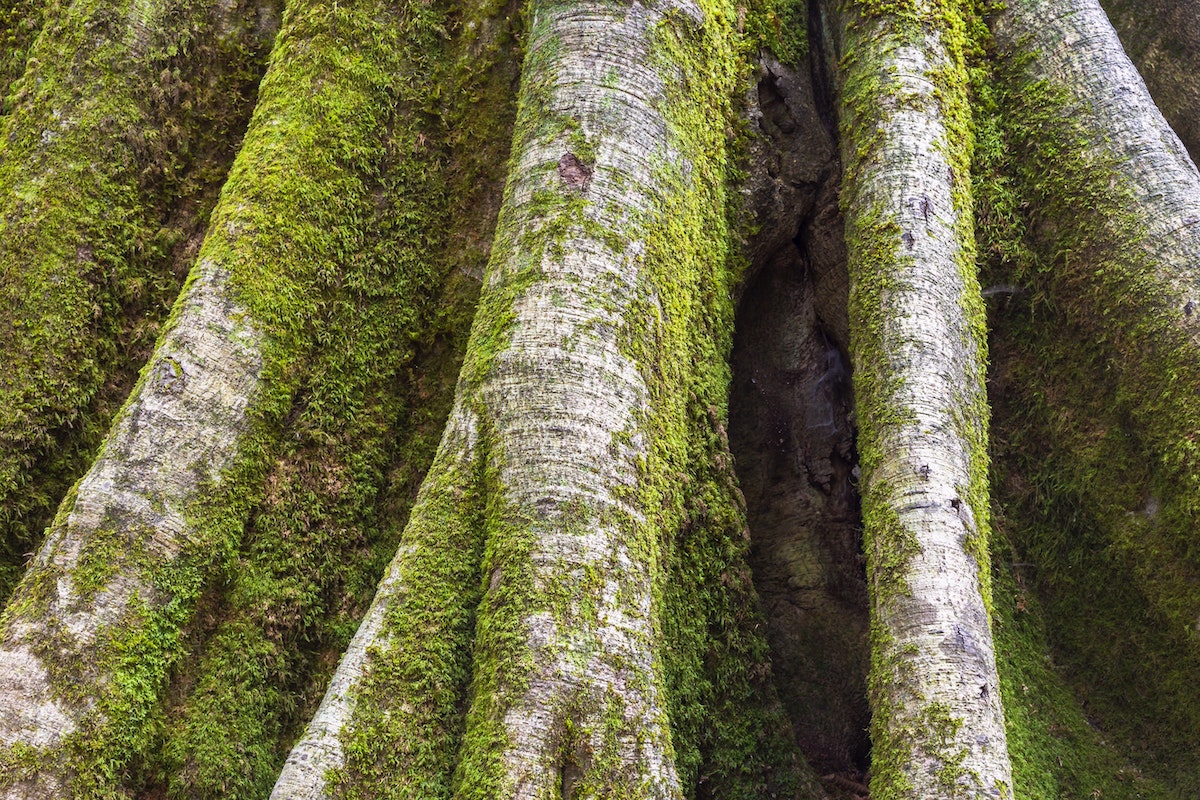Since the dawn of time, humans have enjoyed an essential relationship with trees. They provide for the human necessities of food, fire, and shelter, as well as a myriad of other uses. But the trees themselves are also hosts to countless resident organisms, virtually all of which can be harnessed by the resourceful survivalist. In addition, the relationship between trees and the landscapes upon which they reside often contain clues that can aid in navigation, water procurement, timekeeping, and even weather prediction.
Trees are more than just leaves, bark, and wood; rather, they are worlds in and of themselves, microcosms of life and process. If you’re in the Pacific Northwest, for example, you’re likely to see that moss and lichen are permanent fixtures on most trees. Alectoria sarmentosa, or ‘witch’s hair’ lichen is especially present on the branches of trees near the wetter, mountainous regions. It dangles in long, grey-green strands, hence the name. The lichen was used extensively by the coastal Salish peoples for everything from bandages to baby diapers. When dry, it provides an excellent tinder for fire-making. Pull some off of a branch and store it in your pocket, it could come in handy.
You might also notice bright green moss growing along the trunks of nearby trees. It’s likely to be Sphagnum moss, one of the most important bryophytes of the region. Moss can absorb up to 12 times its weight in liquid, making it not only ideal as a potential source of freshwater, but an excellent wound dressing as well. When dry, it’s unrivaled as a quick bedding option, providing both insulation and comfort.
Depending on your location, the presence of moss on a tree can be a good indication of north and south. Mosses prefer to grow on the side with the most moisture, generally out of the way of direct sunlight. In the northern hemisphere, that would be the northern side of the tree, with the bare side facing towards the south. Also, if you happen upon a downed tree and can examine the stump, take a look at the pattern of growth rings. Trees tend to put on more wood in the direction of maximum sunlight. In the northern hemisphere, that is to the south. You will often observe that the growth rings are thicker on the southern-facing side of the tree, and more narrow towards the north. This tendency provides yet another quick way of getting your bearings.
Growth rings also provide insight into the local environmental conditions over time. Trees are very sensitive to changes in their environment, such as temperature and rainfall, and will make adjustments to their growth accordingly. By closely observing the growth pattern, you can determine whether spring comes early or late, if the region is prone to fire and/or insect infestations, and the frequency of drought. The actual science of examining tree rings is known as Dendrochronology, and is a particularly valuable skill for the survivalist.
Weather patterns exert a strong influence upon the landscape, and the outward appearance of trees often reflects this influence. If a region experiences high winds, for example, the branches of local trees can usually reveal the prevailing wind direction. They will tend to grow with the same, general orientation as that of the wind, rather like a weather vane. In a survival situation, this knowledge may prove useful in determining where to build your shelter, and even what kinds of weather for which to prepare.
With all the ways in which trees can provide knowledge and resources, it is of little wonder that humans have depended so much upon them during the course of our history. It is also amazing to think that even after all this time, we continue to find new things to learn about them. Indeed, as teachers, trees remain some of our most important and valued. And to the survivalist, knowledge is the most essential resource of them all.
Rob Pretlow is an Earth and Space scientist as well as an Immersion 2010-2011 graduate. If you have any questions regarding rocks, space, or other geektastic fare, don’t hesitate to contact him at [email protected].
